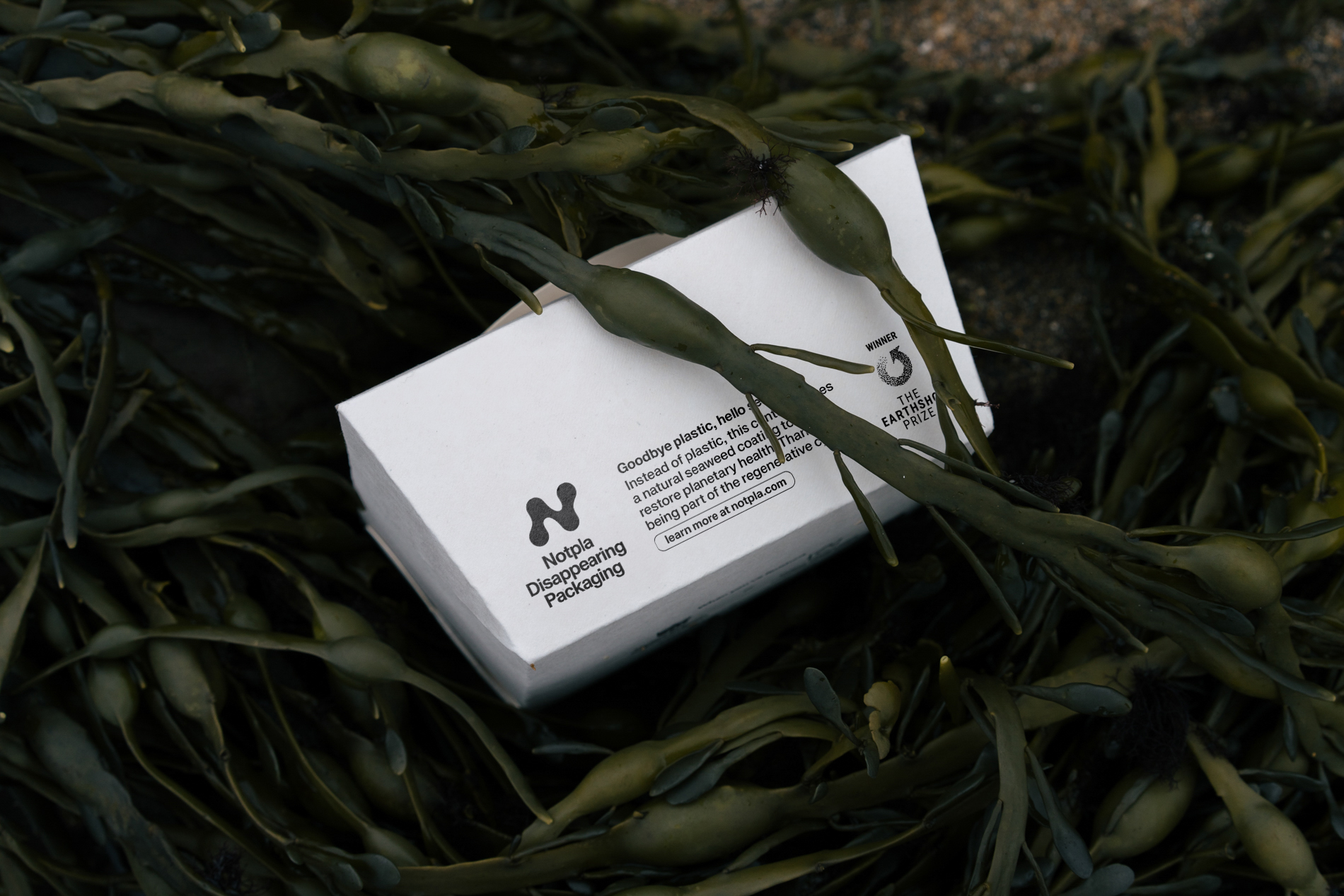
As businesses, regulators, and consumers demand sustainable, waste-free solutions, packaging is being reimagined in exciting new ways. At Notpla, we’re passionate about circular design and future-forward materials and we’re constantly inspired by the innovators driving change across the sector.
In this article, we explore 9 of the most exciting developments in innovative sustainable food packaging and what they mean for the future of food.
.jpg)
How sustainable packaging has evolved
Foodservice packaging innovation has come a long way from paper straws and brown kraft boxes.
Today’s solutions are not only more circular, but also more high-performing, beautiful, and aligned with fast-changing consumer preferences. From antimicrobial films to blockchain traceability, this is a sector evolving rapidly.
The challenge now? Scaling these innovations affordably and responsibly, so they can become the norm and not the niche.
Here are 9 packaging breakthroughs that show what’s possible:
1. Potato starch bottles
A juice bottle you can wash away? Swedish design studio Tomorrow Machine made it possible. In collaboration with Eckes-Granini, they developed GoneShells - a bottle made from potato starch that dissolves in warm water. Much like Notpla’s seaweed-based formats, this innovation is part of a growing trend of packaging that leaves no trace.
2. Blockchain-integrated smart packaging
Transparency is a growing priority for food brands. Nestlé teamed up with IBM and the Rainforest Alliance to pilot blockchain-enabled packaging that lets customers track a product’s origin via a simple QR code.
This technology builds trust, improves traceability, and sets a new bar for ethical sourcing and supply chain storytelling.
3. Plant-based films with natural antimicrobial properties
Think clingfilm but compostable, and smarter. These plant-based films use ingredients like starches, or essential oils to preserve food without synthetic preservatives. They’re often flexible, transparent, and naturally extend shelf life.
Safe, biodegradable, and increasingly scalable, these films could revolutionise how fresh food is wrapped.
4. Cellulose-based packaging
Made from plant fibres, cellulose-based materials offer a mono-material, renewable alternative to plastic. Tim Hortons made headlines when it replaced plastic lids and cutlery with cellulose and wood-based options, eliminating an estimated 90 million pieces of plastic annually.
Meanwhile, Canadian innovators like CelluloTech are developing cellulose-based coatings that could soon replace conventional plastic films altogether.
5. Edible microlaser sensors & edible packaging
What if your packaging could talk to you? Researchers are exploring microscopic edible lasers that monitor food freshness, temperature exposure, and sugar levels. These sensors can be embedded directly into edible wraps - like rice paper, starch films, or seaweed - adding functionality without waste.
The bonus? These smart sensors disappear along with the packaging.
6. Plant-based plastics
PLA (polylactic acid) and other plant-based plastics offer a promising alternative to oil-derived polymers - but they come with caveats. Coca-Cola’s PlantBottle, made from plant-based chemicals like fermented corn sugars, debuted in 2024 as a 100% plant-based bottle. While the technology is exciting, questions remain around scalability, infrastructure, and whether these bottles can truly close the loop without industrial composting.
7. Water-soluble sachets for condiments
Single-use sauce sachets are notoriously wasteful. Enter water-soluble sachets made from materials like PVOH or seaweed. These dissolve completely in hot water, making them ideal for pre-portioned spices, sauces, or supplements. Already used in meal kits, catering, and travel food services, they’re a small tweak with big potential impact.
8. Mushroom-based packaging
Grown - not made. That’s the magic of mycelium, the root system of mushrooms. By combining mycelium with agricultural waste, innovators are creating lightweight, compostable packaging for everything from takeaway trays to protective shipping boxes. It breaks down in soil in under 45 days and can be shaped to fit any product, without the need for energy-intensive manufacturing.
9. Seaweed-based packaging (that’s Notpla)
At Notpla, we believe packaging should disappear naturally - not just look sustainable.
That’s why we create packaging from seaweed and plants. It’s naturally home-compostable, PFAs-free, and leaves behind no microplastics. We use it to make everything from takeaway food containers to sachets - offering a certified alternative to plastic that’s easy to dispose of and beautiful to use.
Recognised by the Earthshot Prize and trusted by foodservice brands across Europe, we’re proud to be part of the packaging revolution and helping businesses scale truly circular solutions.
.jpeg)
Challenges and opportunities
Like all innovations, sustainable packaging faces some barriers, from material sourcing and cost, to consumer confusion and disposal infrastructure.
But the opportunities are bigger.
By adopting innovative food packaging solutions, businesses can:
As these materials scale and infrastructure improves, the case for switching becomes stronger - commercially and environmentally.
Final thoughts: The future of sustainable food packaging innovation
From smart tech to ancient materials like seaweed, the packaging world is changing fast and that’s a good thing.
The more we embrace these innovative food packaging ideas, the closer we move to a system where waste becomes a thing of the past. At Notpla, we’re proud to be part of this shift and even prouder to stand alongside the innovators driving it forward.
.jpg) Wembley Stadium partners with Notpla and Delaware North to advance sustainable packaging in live music
Wembley Stadium partners with Notpla and Delaware North to advance sustainable packaging in live music A Seaweed-Powered Win at the 2025 Pentawards | Innovation of the Year
A Seaweed-Powered Win at the 2025 Pentawards | Innovation of the Year  Meet Ross Mundy and Matt Mitchell, Co-Founders of The Hogless Roast - A 'Sustainability Legend’ with the UK’s best vegan menu
Meet Ross Mundy and Matt Mitchell, Co-Founders of The Hogless Roast - A 'Sustainability Legend’ with the UK’s best vegan menu